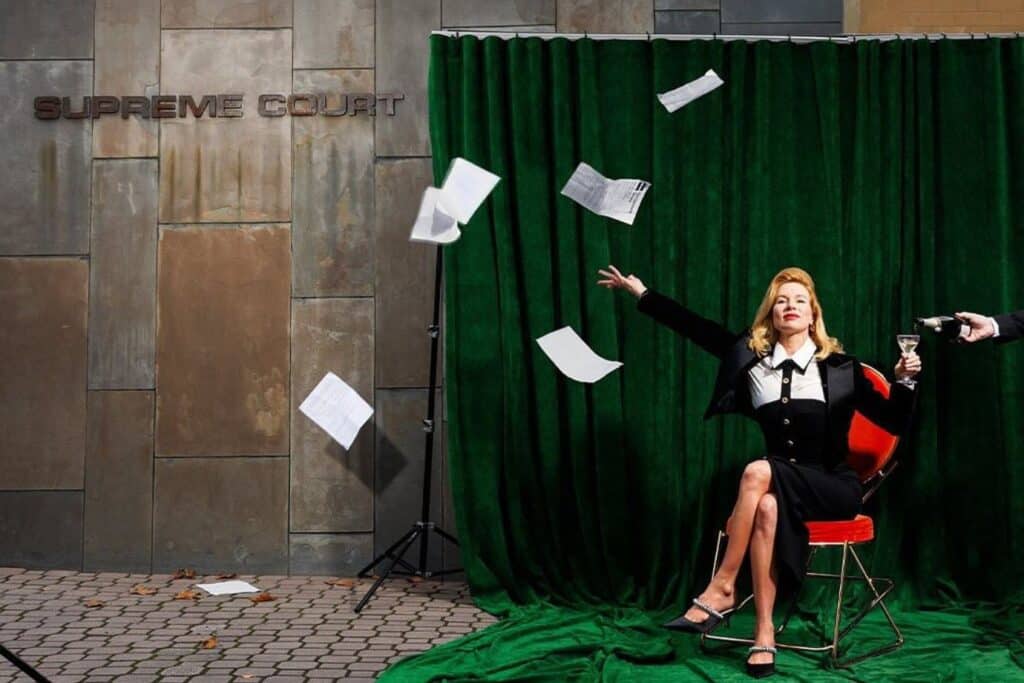Amid the evolving discourse on gender and space, the incident involving MONA’s Ladies Lounge presents a poignant illustration of the complexities surrounding women-only spaces.
The motivation behind the challenge to such a space—whether for genuine inclusion or as a symbolic assertion of rights—raises fundamental questions about the purpose and sanctity of gender-specific environments.
The situation begs the question: once access is granted, does the initial challenger genuinely seek to participate, or is the victory more about the principle of access than actual use? This scenario mirrors broader societal tensions, where the struggle for access often provokes deeper issues of control, inclusion, and the redefinition of gender-specific environments.
Throughout history there have been instances where men have attempted to assert influence over spaces designed for women. These endeavours often reveal a pattern of challenging the autonomy of spaces designated for women’s empowerment and support, reflecting a tendency to scrutinise and contest these sanctuaries, not necessarily for the purpose of genuine engagement, but as a question of principle.
Why is this tension significant? It directly correlates to larger societal challenges such as domestic violence and gender inequality in the workforce—areas where women’s voices and safety is paramount.
Resistance to women-only spaces exemplifies the ongoing struggle for women to assert their rights and maintain autonomy over their environments.
The persistent need for these spaces is starkly highlighted by studies indicating a high percentage of women feel unsafe in public spaces. A recent Adidas study highlighted that 92 per cent of women are concerned for their safety when going for a run. The Sydney Women’s Fund research by Dr Rebecca Huntley said 64 per cent of women surveyed change their plans to feel safe, saying they don’t walk alone after dark or try to avoid it. It also mentioned a proportionate number of women did not feel safe using public transport alone.
Tens of thousands of Australian men and women have gathered across the country, rallying against gender-based violence demanding action against an entrenched epidemic. We do not have enough shelters, and funding and resources are scarce. This underscores the persistent hurdles in achieving genuine gender parity and safety.
The Women’s Club, with its 123-year legacy, stands as a testament to the resilience of women’s spaces amidst these challenges. Its survival and thriving community demonstrate the ongoing necessity of such spaces as sanctuaries for women to connect, empower, and support one another away from societal pressures and gender-based scrutiny.
Beyond providing a physical haven, women-only spaces offer psychological and emotional support, fostering environments where women can freely express themselves, engage in intellectual and creative pursuits, and find solidarity among peers. The motivation behind challenges to these spaces often reveals more about societal dynamics—power, control, and the shifting understanding of gender roles—than about the spaces themselves.
In reflecting on the incident at MONA and similar challenges faced by women-only or minority spaces, it’s clear that the debate over gender-specific spaces isn’t merely about access but what these spaces represent: autonomy, safety and the preservation of a community where women can thrive.

The enduring relevance and proliferation of women-only spaces, from associations to clubs and organisations, affirm their vital role in fostering environments supportive of women’s needs. As society grapples with issues of gender inequality, violence against women, and the underrepresentation of women in various sectors, the necessity of women-only spaces remains as relevant and crucial as ever.
The leadership displayed by the lounge’s creator, artist Kirsha Kaechele, is an embodiment of the suffragettes and activists who fought for the women’s right to vote in 1901; the same women that founded The Women’s Club and appealed to reform many policies that impacted women and children. They still exist today, just with a different face.
In navigating the complex social dynamics surrounding gender and space, it is essential to understand the multifaceted reasons behind the existence of women-only spaces.
They are not just a response to immediate threats but a proactive measure in building a society where women can fully and safely participate, leveraging the collective strength and solidarity found within these exclusive environments.


